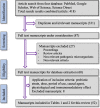Role of immunomodulatory probiotics in alleviating bacterial diarrhea in piglets: a systematic review
- PMID: 39129013
- PMCID: PMC11318305
- DOI: 10.1186/s40104-024-01070-z
Role of immunomodulatory probiotics in alleviating bacterial diarrhea in piglets: a systematic review
Abstract
Diarrhea is a common enteric disease in piglets that leads to high mortality and economic losses in swine production worldwide. Antibiotics are commonly used to prevent or treat diarrhea in piglets. However, irrational antibiotic use contributes to the development of resistance in bacteria and antibiotic residues in animal products, threatening public health, while causing gut microbiota dysbiosis and antibiotic-resistant bacterial infection in piglets. Therefore, the quest for alternative products (such as probiotics, prebiotics, organic acids, enzymes, essential oils, medium-chain fatty acids, zinc, and plant extracts) has recently been clearly emphasized through the increase in regulations regarding antibiotic use in livestock production. These antibiotic alternatives could lower the risk of antibiotic-resistant bacteria and meet consumer demand for antibiotic-free food. Several antibiotic alternatives have been proposed, including immunomodulatory probiotics, as candidates to reduce the need for antimicrobial therapy. Many studies have revealed that probiotics can avert and cure bacterial diarrhea by regulating the gut function and immune system of piglets. In this review, we focus on the major pathogenic bacteria causing piglet diarrhea, the research status of using probiotics to prevent and treat diarrhea, their possible mechanisms, and the safety issues related to the use of probiotics. Supplementation with probiotics is a possible alternative to antibiotics for the prevention or treatment of bacterial diarrhea in piglets. Furthermore, probiotics exert beneficial effects on feed efficiency and growth performance of piglets. Therefore, appropriate selection and strategies for the use of probiotics may have a positive effect on growth performance and also reduce diarrhea in piglets. This review provides useful information on probiotics for researchers, pig nutritionists, and the additive industry to support their use against bacterial diarrhea in piglets.
Keywords: Clostridium; E. coli; Diarrhea; Immunomodulatory effect; Piglets; Probiotics.
© 2024. The Author(s).
Conflict of interest statement
The authors declare no conflict of interst.
Figures




Similar articles
-
The Role of Probiotics in Alleviating Postweaning Diarrhea in Piglets From the Perspective of Intestinal Barriers.Front Cell Infect Microbiol. 2022 May 30;12:883107. doi: 10.3389/fcimb.2022.883107. eCollection 2022. Front Cell Infect Microbiol. 2022. PMID: 35711653 Free PMC article. Review.
-
Probiotics in piglet: from gut health to pathogen defense mechanisms.Front Immunol. 2024 Nov 4;15:1468873. doi: 10.3389/fimmu.2024.1468873. eCollection 2024. Front Immunol. 2024. PMID: 39559358 Free PMC article. Review.
-
Bifidobacterium animalis Promotes the Growth of Weaning Piglets by Improving Intestinal Development, Enhancing Antioxidant Capacity, and Modulating Gut Microbiota.Appl Environ Microbiol. 2022 Nov 22;88(22):e0129622. doi: 10.1128/aem.01296-22. Epub 2022 Oct 27. Appl Environ Microbiol. 2022. PMID: 36300953 Free PMC article.
-
The protective role of prebiotics and probiotics on diarrhea and gut damage in the rotavirus-infected piglets.J Anim Sci Biotechnol. 2024 May 3;15(1):61. doi: 10.1186/s40104-024-01018-3. J Anim Sci Biotechnol. 2024. PMID: 38698473 Free PMC article. Review.
-
Development of piglet gut microbiota at the time of weaning influences development of postweaning diarrhea - A field study.Res Vet Sci. 2021 Mar;135:59-65. doi: 10.1016/j.rvsc.2020.12.022. Epub 2020 Dec 30. Res Vet Sci. 2021. PMID: 33444908
Cited by
-
Milk sialyl-oligosaccharides mediate the early colonization of gut commensal microbes in piglets.Microbiome. 2025 May 24;13(1):135. doi: 10.1186/s40168-025-02129-3. Microbiome. 2025. PMID: 40413516 Free PMC article.
-
Composite Probiotics Improve Gut Health and Enhance Tryptophan Metabolism in Nursery Piglets During Liquid Feeding.Int J Mol Sci. 2025 Jun 13;26(12):5698. doi: 10.3390/ijms26125698. Int J Mol Sci. 2025. PMID: 40565160 Free PMC article.
-
Potential relationship between gut microbiota and animal diarrhea: a systematic review.Front Microbiol. 2025 Jul 24;16:1637331. doi: 10.3389/fmicb.2025.1637331. eCollection 2025. Front Microbiol. 2025. PMID: 40778205 Free PMC article. Review.
-
Effects of gut microbiota and metabolites on the host defense peptide expression.Appl Microbiol Biotechnol. 2025 Jan 18;109(1):10. doi: 10.1007/s00253-024-13400-2. Appl Microbiol Biotechnol. 2025. PMID: 39825892 Free PMC article. Review.
-
Aryl hydrocarbon receptor (AhR) alleviates the LPS-induced inflammatory responses in IPEC-J2 cells by activating PINK1/Parkin-mediated mitophagy.Inflamm Res. 2025 Jun 30;74(1):98. doi: 10.1007/s00011-025-02063-y. Inflamm Res. 2025. PMID: 40583101
References
-
- Sjölund M, Zoric M, Wallgren P. Financial impact of disease on pig production. Part III. Gastrointestinal Disorders. Proceedings of 6th European Symposium of Porcine Health Management. Italy, Sorrento: Printed by Litografia La Ducale srl Parma; 2014. p. 189.
Publication types
Grants and funding
LinkOut - more resources
Full Text Sources
Molecular Biology Databases

